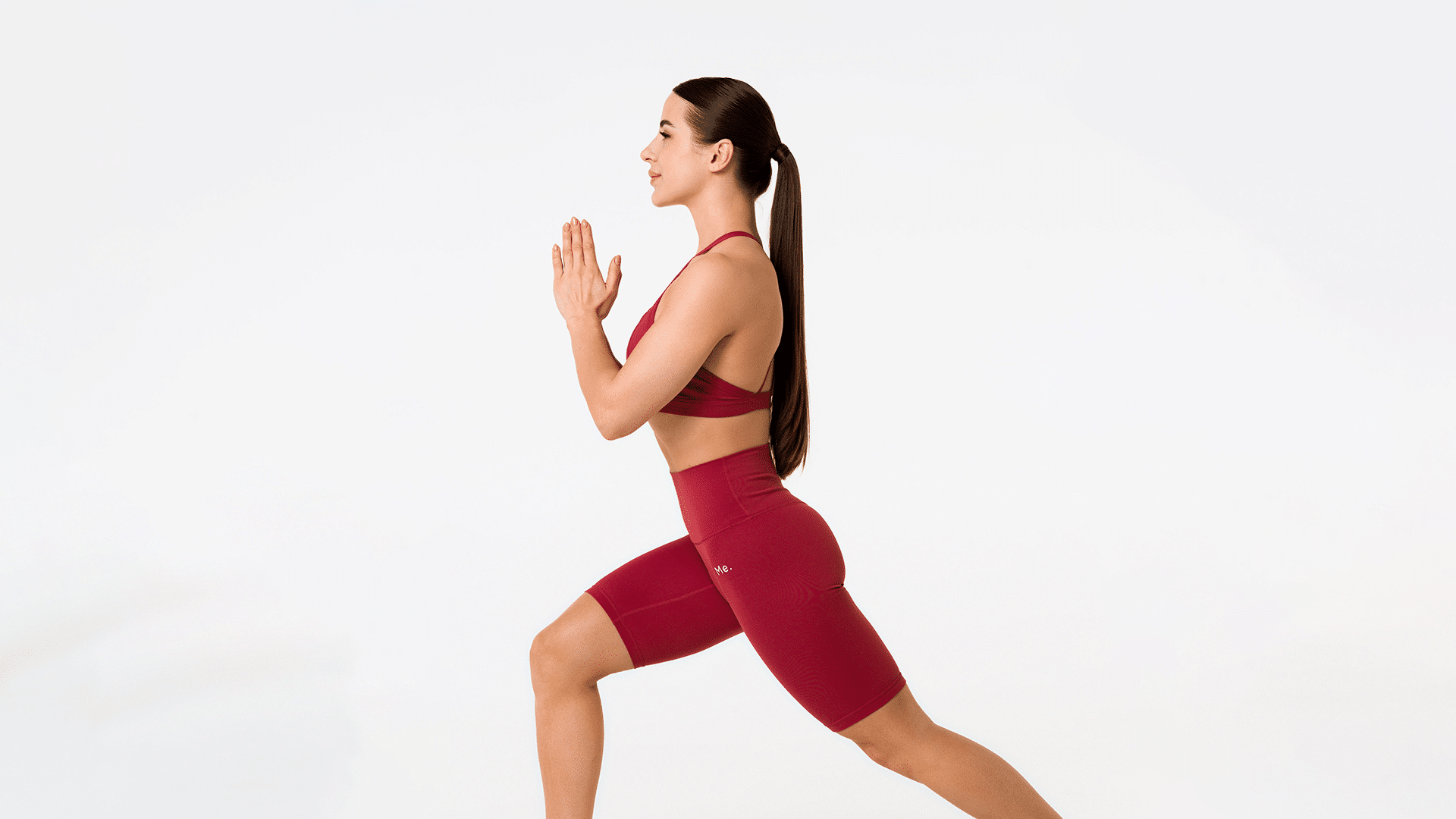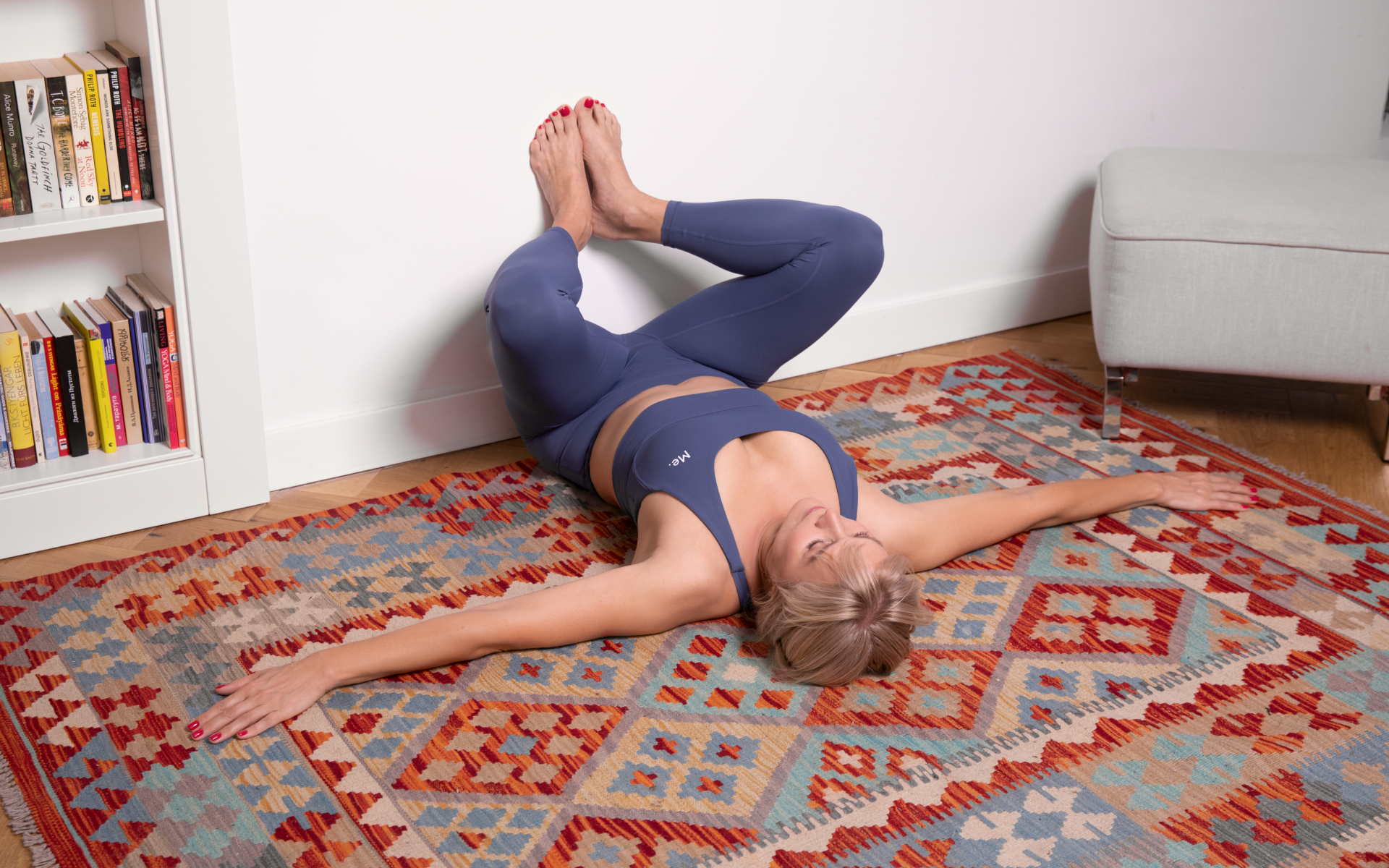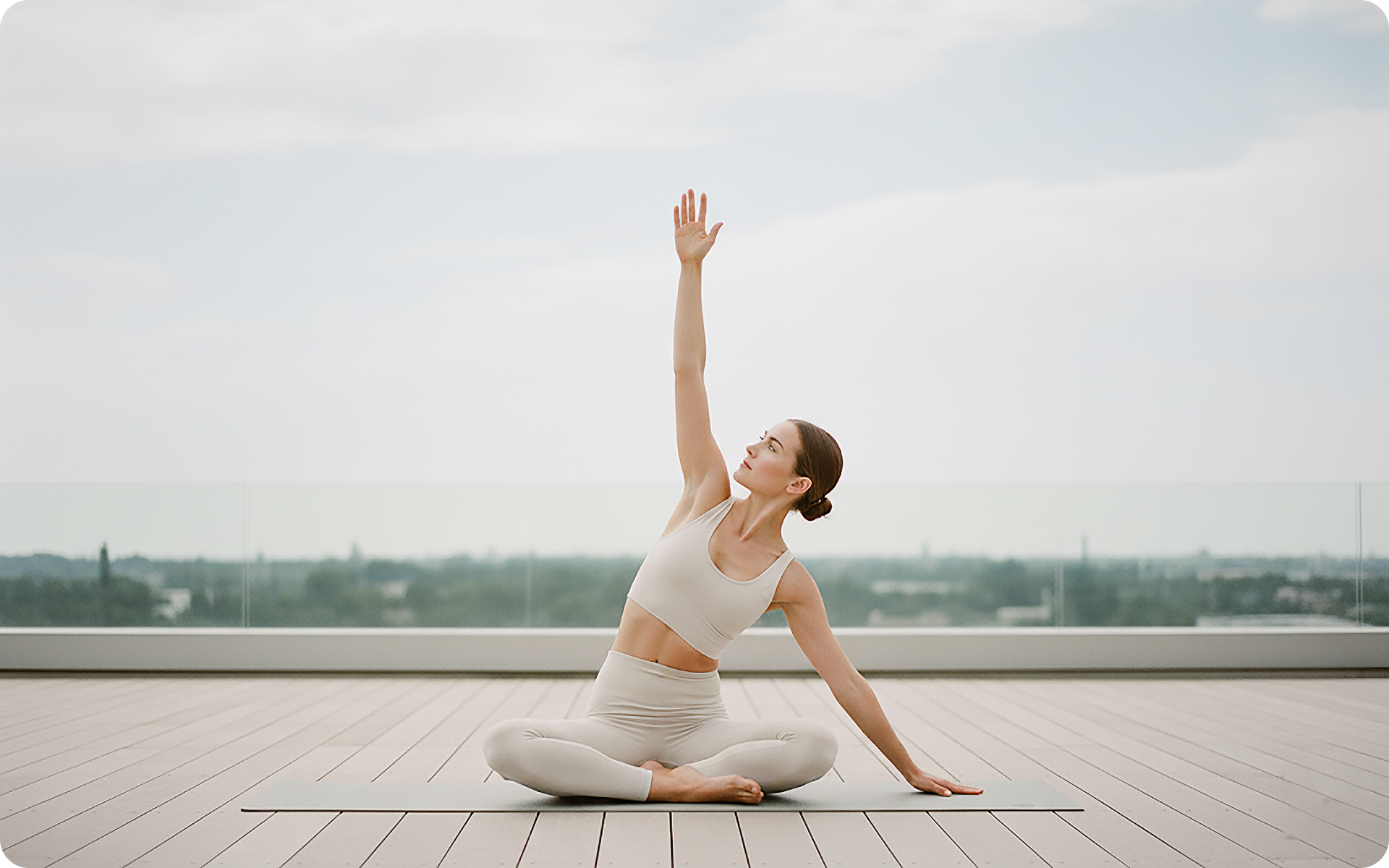The wall squat, also more commonly known as the wall sit, is a highly effective exercise for building lower body strength and endurance. Mastering this simple yet powerful move can help you improve your overall fitness, increase muscle tone, and promote joint stability. In this article, we will discuss what a wall squat is, how to do a proper squat on the wall, and the benefits of incorporating this exercise into your routine.
What Is A Wall Squat?
A wall squat is an isometric exercise that targets the quadriceps, hamstrings, glutes, and core muscles. By performing this exercise against a wall, you can focus on maintaining proper form while building strength and endurance in your lower body.
How To Do A Proper Squat On The Wall: 6 Simple Steps
1. Setting Up The Correct Posture
Stand with your back against a flat wall, feet shoulder-width apart, and positioned about two feet away from the wall. Your head, shoulders, and lower back should be in contact with the wall.
2. Initiating The Wall Squat Movement
Slowly slide your back down the wall, bending your knees until they reach a 90-degree angle. Your thighs should be parallel to the ground, with your knees directly above your ankles. However, if you are a beginner or progressing back from injury or mobility issues, work to a depth where your hips are higher than your knees, progressing the movement when you are comfortable doing so.
3. Holding The Squat Position
Keep your core engaged and maintain an upright posture with your back pressed against the wall. Hold this position for the desired amount of time or as long as you can maintain proper form.
4. Proper Breathing Technique During The Exercise
Breathe slowly and deeply, inhaling through your nose and exhaling with pursed lips, focusing on a controlled exhale. Be sure to keep your core braced throughout, with minimal movement. This helps to keep your core optimally engaged and maintain stability.
5. Returning To The Starting Position
Slowly straighten your legs and slide back up the wall by driving your feet into the ground to return to the standing position. Be sure to maintain contact with the wall throughout the movement.
6. Maintaining Proper Form Throughout The Exercise
Focus on keeping your weight evenly distributed between your heels and the balls of your feet, and avoid leaning too far forward or backward. Think about your whole foot maintaining contact with the ground, and driving through your mid foot to stand up.
Read More: If I Were You, I’d Use This Wall Pilates Program To Activate My Body’s Natural Movement Patterns
How Long Do I Need To Do A Wall Squat?
For beginners, aim to hold the wall squat position for 15-30 seconds, repeating the exercise for 2-3 sets with equal, or double the amount of rest time. As you build strength and endurance, gradually increase the duration of the hold, working your way up to 60 seconds or more.
How To Wall Squat: Common Mistakes To Avoid
To maximize the benefits of wall squats and prevent injuries, it’s crucial to maintain proper form throughout the exercise. Here are some common mistakes to avoid, their potential effects, and what you should do instead:
Incorrect Foot Placement
Placing your feet too close to the wall or too far apart can put unnecessary stress on your knees and ankles, potentially leading to your discomfort or injury.
What To Do Instead
Be sure that your feet are shoulder-width apart and positioned about two feet away from the wall. Your knees should be aligned directly above your ankles when you reach the squat position.
Limited Range Of Motion
Not lowering your body enough or not maintaining a 90-degree angle at the knees can reduce the effectiveness of the exercise and limit the activation of the target muscle groups. However, if you can only work at a specific range, you can increase the effectiveness by holding for more time.
What To Do Instead
Aim to lower your body until your thighs are parallel to the ground and your knees form a 90-degree angle. If you have difficulty achieving this range of motion, start at a depth you feel comfortable with and gradually work on improving your flexibility and strength.
Arching Or Rounding The Lower Back
Losing contact with the wall or allowing your lower back to arch or round during the exercise can place strain on your spine, increasing the risk of injury. Remember to keep your rib cage stacked over your hips, rather than flared out – this will help with optimal positioning and core engagement.
What To Do Instead
Keep your head, shoulders, and lower back in contact with the wall throughout the movement. Engage your core muscles to maintain a neutral spine and provide additional support for your lower back.
Leaning Too Far Forward Or Backward
Shifting your weight too far forward onto your toes or leaning too far back against the wall can result in an improper squat position, as well as shift weight distribution placing too much emphasis or load onto one specific part of the body, which can further compromise the effectiveness of the exercise.
What To Do Instead
Focus on keeping your weight evenly distributed between your heels and the balls of your feet while maintaining contact with the wall. This will help you maintain proper form and engage the target muscle groups more effectively.
If you’ve mustered up the courage to crush your weight loss goal, let Betterme take the sting out of this demanding process. Our app will help you restructure your habits, remold your life and crank up your fitness results!
Not Engaging Core Muscles
Failing to engage your core muscles during the wall squat can result in poor posture and reduced stability, which may increase the risk of injury.
What To Do Instead
Actively engage your core muscles by drawing your belly button toward your spine and maintaining a tight, stable midsection. You can do this by taking a deep breath in (imagine sipping through a straw for optimal technique), filling your entire torso with air and expanding it, from there brace your core, and hold your breath. This will help support your lower back and improve your overall balance and stability during the exercise.
Common Wall Squat Variations
Understanding the different types of wall squats is essential because each variation targets specific muscle groups or challenges your stability in unique ways.
By incorporating various wall squat exercises into your routine, you can prevent boredom, keep your workouts engaging, and ensure well-rounded development of your lower body muscles.
Here’s a more detailed look at each type of wall squat and the benefits they offer:
Basic Wall Squat
The basic wall squat is the foundation for all other variations of this exercise. It primarily targets the quadriceps, hamstrings, glutes, and core muscles.
This is the best starting point for beginners who want to build strength and endurance in their lower body before progressing to more advanced versions.
The basic wall squat helps improve posture, stability, and overall lower body strength.
Wall Squat With A Stability Ball
This variation involves placing a stability ball between your lower back and the wall while performing the squat.
The ball adds an extra element of balance, requiring you to engage your core muscles more effectively. Additionally, the stability ball reduces stress on your lower back by providing support during the exercise.
This version is suitable for individuals looking to challenge their balance and core strength while still targeting the major lower body muscle groups.
Single-Leg Wall Squat
The single-leg wall squat is a more advanced version that requires greater strength, balance, and coordination. In this variation, you lift one leg off the ground while maintaining the squat position with the other leg.
This exercise targets the quadriceps, hamstrings, and glutes of the working leg while also engaging the hip stabilizers and core muscles to maintain balance.
The single-leg wall squat is ideal for athletes or individuals looking to address muscle imbalances, improve unilateral strength, and increase overall lower body power and stability.
Read More: Vertical Leg Training: Transform Your Workout With Wall Exercises For Legs
Wall Squat With Weights
Adding weights to the wall squat exercise can increase the challenge and intensity, leading to greater muscle growth and strength gains.
You can hold dumbbells or kettlebells in your hands while performing the wall squat.
This variation is suitable for individuals who have already mastered the basic wall squat and are looking to take their lower body strength and muscle development to the next level.
What Are The Benefits Of Wall Squats?
Wall squats offer numerous benefits for individuals of all fitness levels. This versatile exercise can help you build strength, improve stability, and enhance overall health. Here are some of the key benefits of incorporating wall squats into your workout routine:
1. Strengthen Lower Body Muscles
Wall squats target several major muscle groups in the lower body, including the quadriceps, hamstrings, glutes, core, and calves. By consistently performing this exercise, you can increase overall lower body strength, which can enhance your performance in various sports and daily activities (3).
2. Improve Core Stability
In addition to engaging the lower body muscles, wall squats also require you to activate your core muscles to maintain proper form and balance. This helps to develop a strong and stable midsection, which is crucial for overall fitness, injury prevention, and improved posture (4).
3. Enhance Balance And Coordination
Performing wall squats challenges your balance and coordination, as you need to maintain a stable position throughout the exercise as fatigue increases. This can be especially beneficial for older adults or individuals recovering from injuries, as improved strength balance and coordination can reduce the risk of falls and accidents (2).
4. Low Impact Exercise
Wall squats are a low-impact exercise, making them suitable for individuals with joint issues or those who are recovering from injuries (1). By performing the exercise against a wall, you can control the range of motion and reduce stress on the knees, hips, and ankles.
5. Increased Flexibility
By holding the squat position for an extended period, you can improve the flexibility of your hips, knees, and ankles while also improving strength and control in these areas. These improvements may help prevent injuries, alleviate stiffness, and promote better mobility in daily activities (5).
6. Burn Calories And Boost Metabolism
While wall squats may not burn as many calories as high-intensity exercises, they still contribute to your overall calorie expenditure and can help boost your metabolism. Combining wall squats with other exercises in a well-rounded workout routine can contribute to weight loss and improved body composition.
Reasons why BetterMe is a safe bet: a wide range of calorie-blasting workouts, finger-licking recipes, 24/7 support, challenges that’ll keep you on your best game, and that just scratches the surface! Start using our app and watch the magic happen.
7. Convenience And Accessibility
One of the major benefits of wall squats is that they can be performed virtually anywhere, requiring only a flat wall for support.
This makes them an ideal exercise for individuals with limited space or access to equipment, as well as those who want to incorporate strength training into their home workouts.
Complementary Exercises And Products: Enhancing Your Wall Squat Experience
Incorporating complementary exercises and using supportive products can help you get the most out of your wall squat training. These additional exercises and tools can further support strength development, improve your overall performance, and make your workouts more enjoyable and effective.
Complementary Exercises
Adding the following exercises to your routine can help you increase lower body strength, improve your balance and stability, and boost your overall lower body physical capacity:
1. Lunges
Lunges are a fantastic exercise for targeting the quadriceps, hamstrings, glutes, and hip stabilizers.
They also challenge your balance and coordination, making them an excellent complement to wall squats.
Lunges can be performed in various ways, such as forward lunges, reverse lunges, or walking lunges, to add variety to your workouts and target different muscles.
2. Step-Ups
Step-ups are another effective lower body exercise that targets the quadriceps, hamstrings, and glutes. They also help improve your balance and stability, as you need to maintain control while stepping up and down from a raised platform. Step-ups can be performed with or without weights, depending on your fitness level and goals.
3. Planks
While wall squats engage your core to some extent, adding planks to your routine can further strengthen your abdominal and lower back muscles through a more isolated exercise.
A strong core is essential for maintaining proper form during wall squats and other exercises, as well as helping to prevent injuries and improve total body strength and overall athletic performance.
Recommended Products
Using the following products can enhance your wall squat experience by providing additional support, increasing the challenge, or improving comfort during the exercise:
1. Stability Balls
Placing a stability ball between your lower back and the wall during wall squats can help reduce stress on your spine and provide additional support. The ball also adds an element of balance, requiring you to engage your core muscles more effectively to maintain proper form.
2. Resistance Bands
Looping a resistance band around your thighs or ankles during wall squats can increase the intensity of the exercise. The added resistance helps activate your glute and hip muscles more effectively, which may lead to greater strength gains and improved performance.
3. Ankle Weights
Wearing ankle weights during wall squats can increase the load on your lower body muscles, particularly, the direct load through your foot and ankle, which could help increase strength through these regions. Ankle weights are particularly useful for advanced exercisers who have already mastered the basic wall squat and want to continue progressing in their training.
The Bottom Line
Incorporating wall squats into your workout routine can provide numerous benefits, including increased lower body strength, improved core stability, enhanced balance, and greater flexibility.
By mastering the correct technique, avoiding common mistakes, and incorporating complementary exercises and products, you can maximize the benefits of this versatile exercise.
Whether you’re a beginner or an advanced exerciser, wall squats can be an essential component of a well-rounded fitness program, helping you achieve your goals and improve your overall health and performance.
DISCLAIMER:
This article is intended for general informational purposes only and does not serve to address individual circumstances. It is not a substitute for professional advice or help and should not be relied on for making any kind of decision-making. Any action taken as a direct or indirect result of the information in this article is entirely at your own risk and is your sole responsibility.
BetterMe, its content staff, and its medical advisors accept no responsibility for inaccuracies, errors, misstatements, inconsistencies, or omissions and specifically disclaim any liability, loss or risk, personal, professional or otherwise, which may be incurred as a consequence, directly or indirectly, of the use and/or application of any content.
You should always seek the advice of your physician or other qualified health provider with any questions you may have regarding a medical condition or your specific situation. Never disregard professional medical advice or delay seeking it because of BetterMe content. If you suspect or think you may have a medical emergency, call your doctor.
SOURCES:
- Care for your joints with low-impact exercise (2018, texas.gov)
- Falls and Fall Prevention In The Elderly (2023, nih.gov)
- Strengthen your body with squats (2016, allinahealth.org)
- The real-world benefits of strengthening your core (2012, harvard.edu)
- The role of flexibility in injury prevention and athletic performance: have we stretched the truth? (2003, nih.gov)













